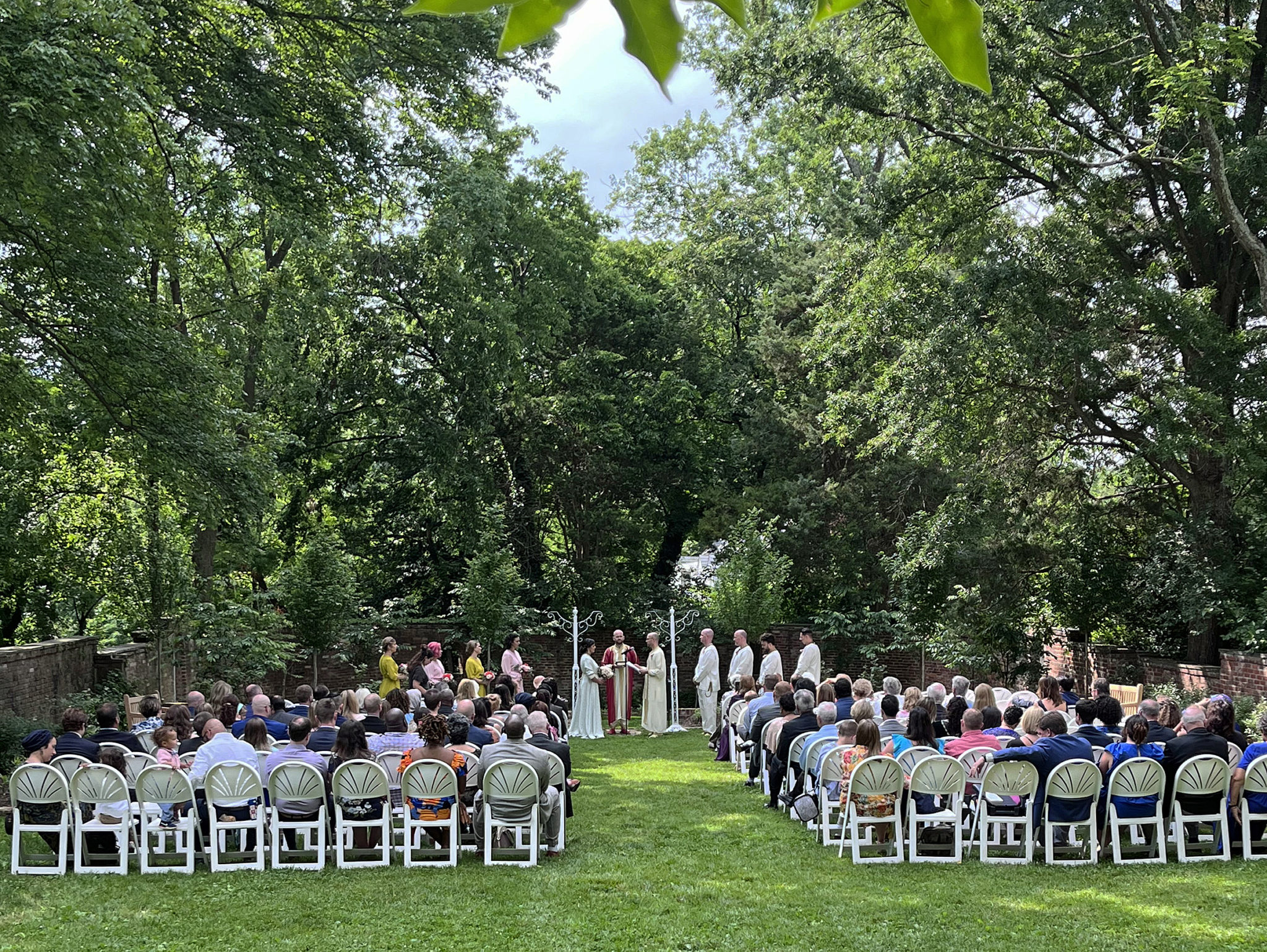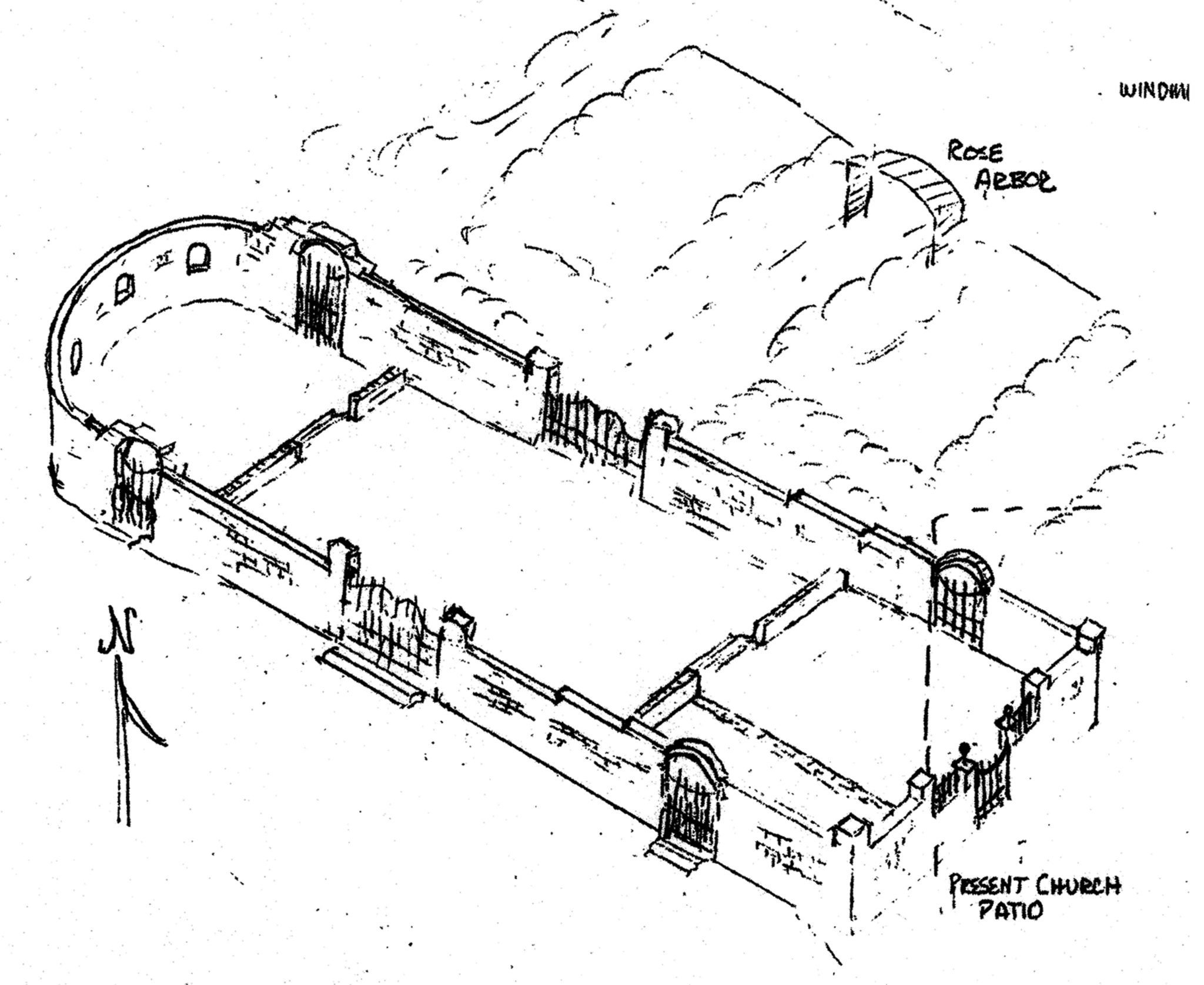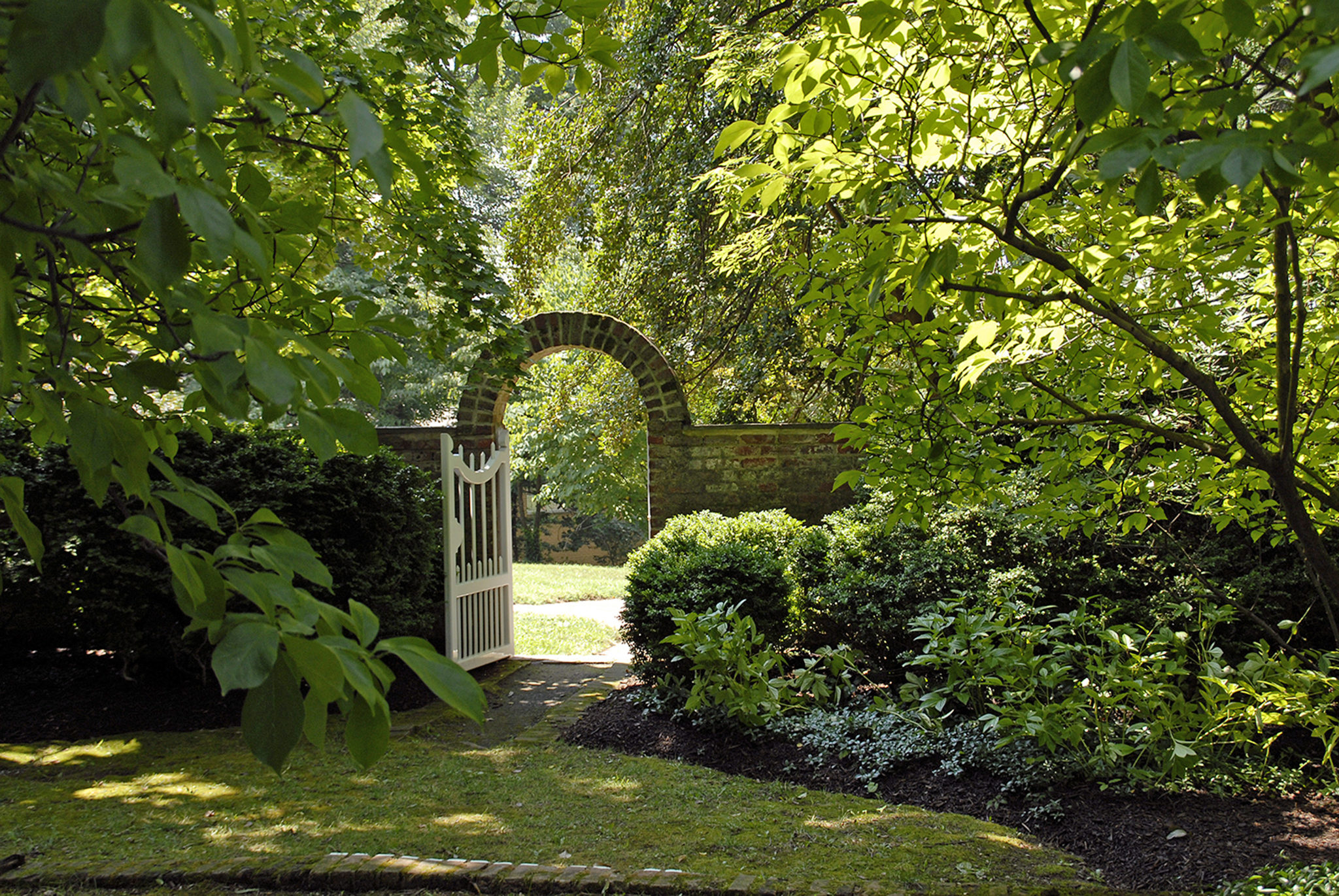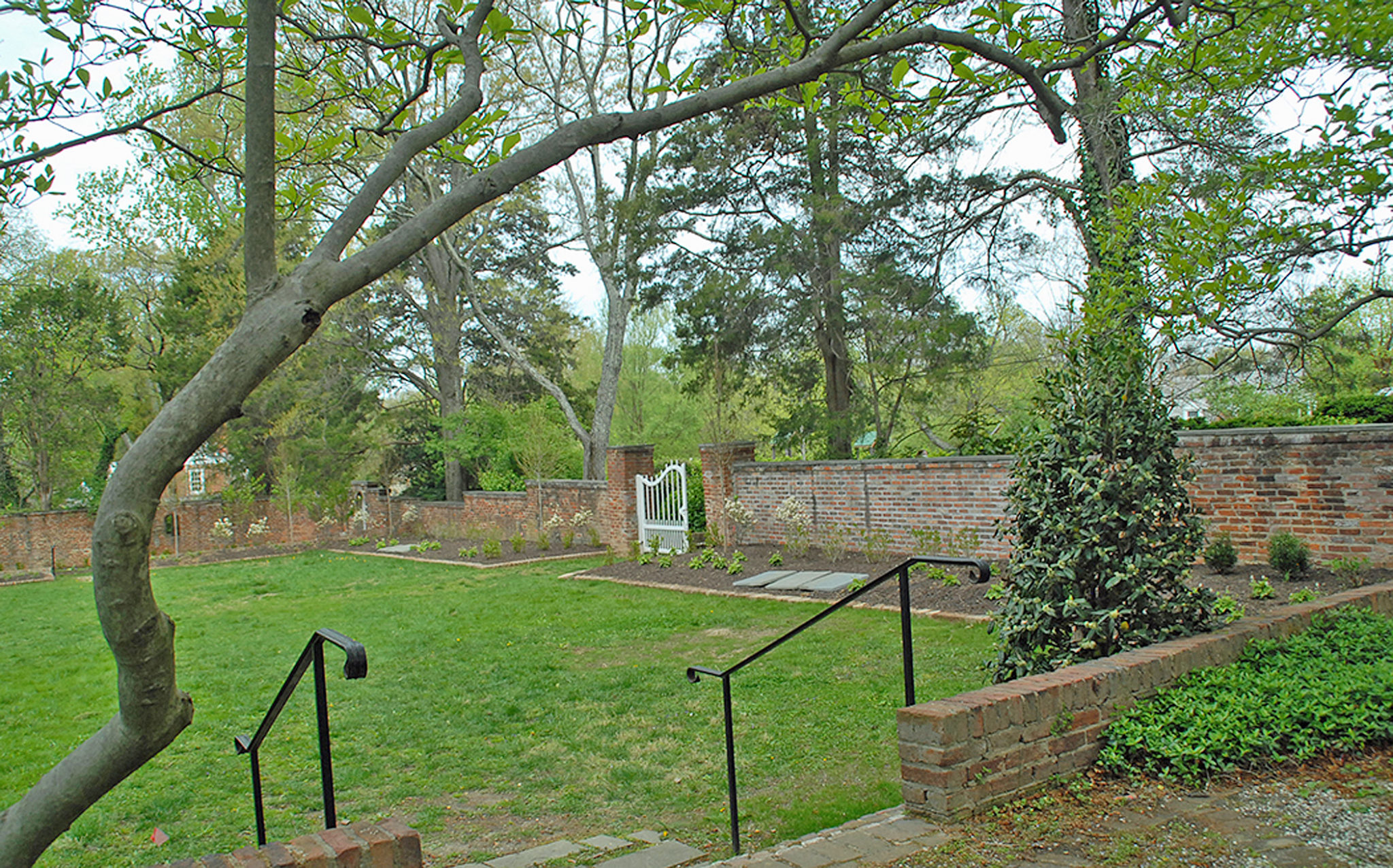Nina Tisara’s Memories and Musings – On a Secret Garden

Alexandria, VA – Once upon a time, a long time ago, but not very far away, a garden was designed by a woman who loved gardens. Her name was Mrs. Harley (Carolyn) Wilson. Her husband was Harley Peyton Wilson, a director of the North American Company, suppliers of locks and docks for the Panama Canal and Potomac Electric Power Company, and president of the Capital Traction Company, which operated Washington D.C.’s electric street cars.
Mr. and Mrs. Harley Wilson completed Hollin Hall, the centerpiece of their 600-acre estate near the Potomac River, in 1919. The grounds were once part of a 2,000-acre plantation that Revolutionary War patriot George Mason had owned since the mid-1700s.
George Mason built Gunston Hall for himself and constructed a house named Hollin Hall for his son Thomson in 1791. It was modeled after a family home in Yorkshire, England. That house near present-day Sherwood Hall Lane was destroyed by fire in 1827. In 1852, Thomson Mason’s property was purchased by Edward Curtis Gibbs, a Quaker sea captain and farmer. Gibbs hired both black and white farmers to demonstrate that plantations could be made profitable without slave labor. The estate passed through several owners before its purchase in 1913 by the Wilsons.

The 16-room, three-story manor house known as Hollin Hall is situated on a seven-acre campus, now the home of Mount Vernon Unitarian Church (MVUC). The modern Meeting House used for church services is a few steps away.
The elegant home had teak floors imported from Japan and was furnished with museum-quality antiques. Mrs. Wilson’s special love was gardening (mine too), and in 1926 she hired a young man, Ernest John Stevens (known as John Stevens), to work on the estate. In the next few years, Stevens supervised a crew of 15 men in constructing the rest of the buildings and laying out the walls and gardens. Boxwood cuttings for the gardens, like the hedges at Gunston Hall and Mount Vernon, came from Stratford, home of the Lees of Virginia. Research indicates that the English boxwood cuttings obtained from Stratford were some hundred years old when they were brought to beautify the walkways and gardens of Hollin Hall.
Over the years, the gardens and grounds have been the venue for numerous special events. Many couples have walked through the beautiful gates into the embrace of the brick-walled garden (sometimes referred to as a “Secret Garden”) to exchange wedding vows and begin their journey together.
Stevens stayed as sexton when MVUC bought the property in 1958 and continued to maintain the grounds until his retirement in 1993. In an article by Mount Vernon resident Jan Cook published in the Gazette, Stevens says, “Mrs. Wilson had me learn stone-cutting at the National Cathedral, and I built stone walls on the property. You can still see one old wall along Fort Hunt Road.”

John Stevens had retired by 2006 when this artist-photographer came on board to help with wedding event coordination. I spent many hours, mostly happy, trimming the wisteria arbor and the vines that grew up amidst the boxwoods.
The Gazette story goes on to relate that “the socially and politically prominent Wilsons entertained lavishly, and well-known visitors were frequent. Some stayed in the Wilsons’ permanent suite at the Mayflower Hotel in Washington, D.C. (That information made the name “The Mayflower’s Log,” referenced in my column “On Research and Rabbit Holes,” The Zebra, June 2022, make sense to me.)
In many old tales, an evil visitor enters the scene. In the case of this idyllic “secret garden,” the unwanted visitor was boxwood blight.
Boxwood blight (also known as box blight and boxwood leaf drop) is a devastating disease that can cause leaf loss and the eventual death of affected shrubs. The blight is caused by a fungus that thrives in humid, warm conditions (summers in Virginia). The disease was first diagnosed in the United States in 2011, simultaneously in Connecticut and North Carolina. By 2018, boxwood blight was reported in 26 more states, including at Mount Vernon Estate. Treatment requires removing and destroying affected shrubs and carefully decontaminating all tools used in the removal process.

And the Knights and Ladies of the Secret Garden came to the rescue. Loving the historic property and recognizing the stewardship responsibilities, a team of Mount Vernon Unitarian Church volunteers created a new design featuring native trees, shrubs, and perennials, some from the original on-site greenhouse. This spring, a task force under the leadership of Mike Arnold, Leah Choudhury, and Mike Walker carefully placed the plantings in fresh earth. Future years will witness the fruit of their labors, but families are already celebrating special occasions in the walled garden. Stay tuned to learn about community activities.
Four miles south of Old Town, Alexandria, Hollin Hall at 1909 Windmill Lane was placed on the Fairfax County Inventory of Historic Sites in 1993.
Mosaic Artist/Photographer Nina Tisara is the founder of Living Legends of Alexandria.
ICYMI: The National Botanic Garden Opens to the Public!



